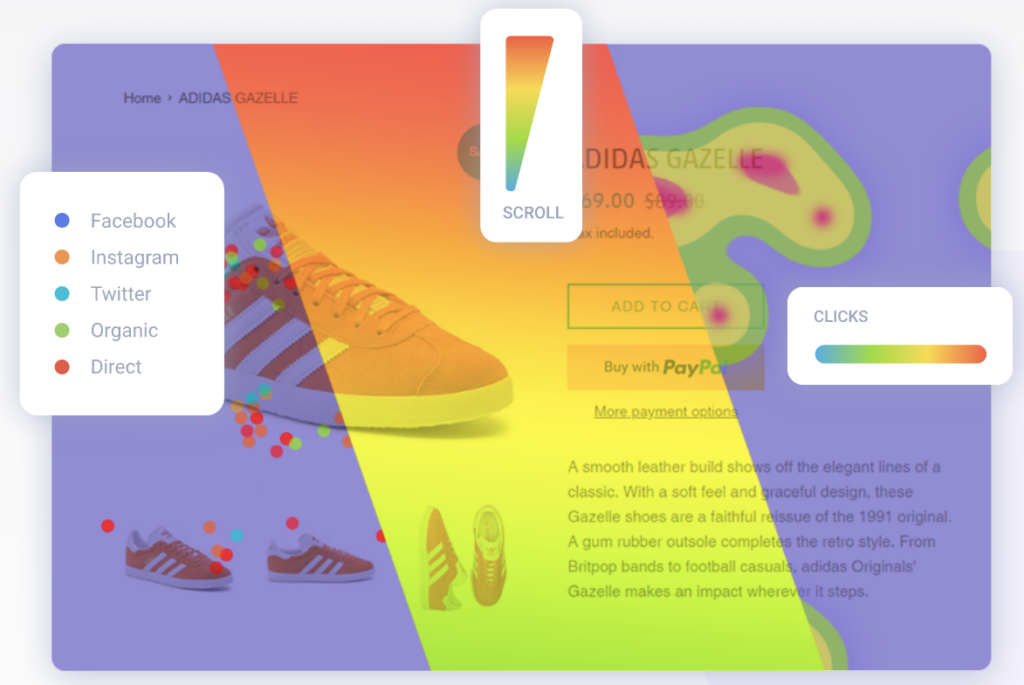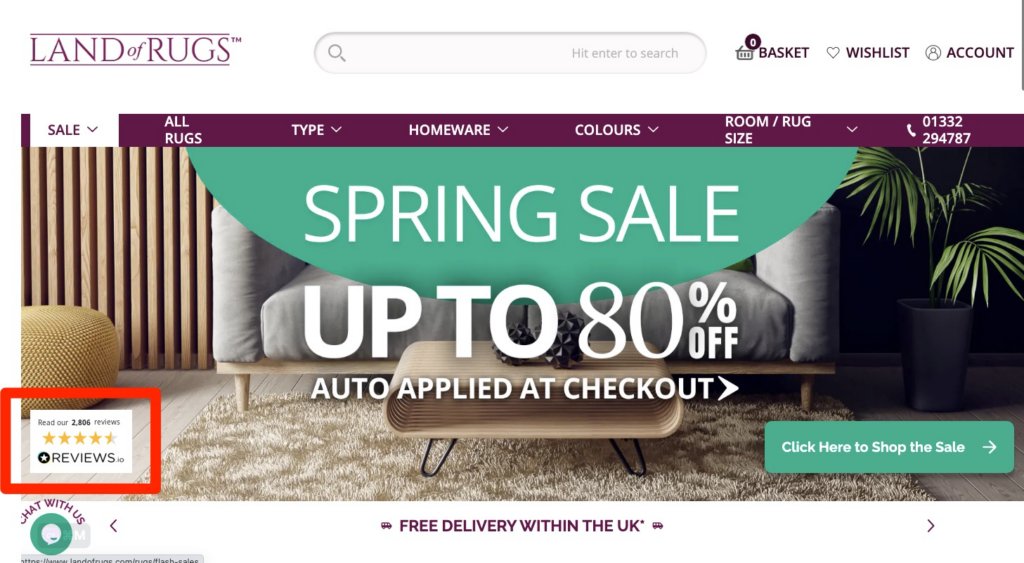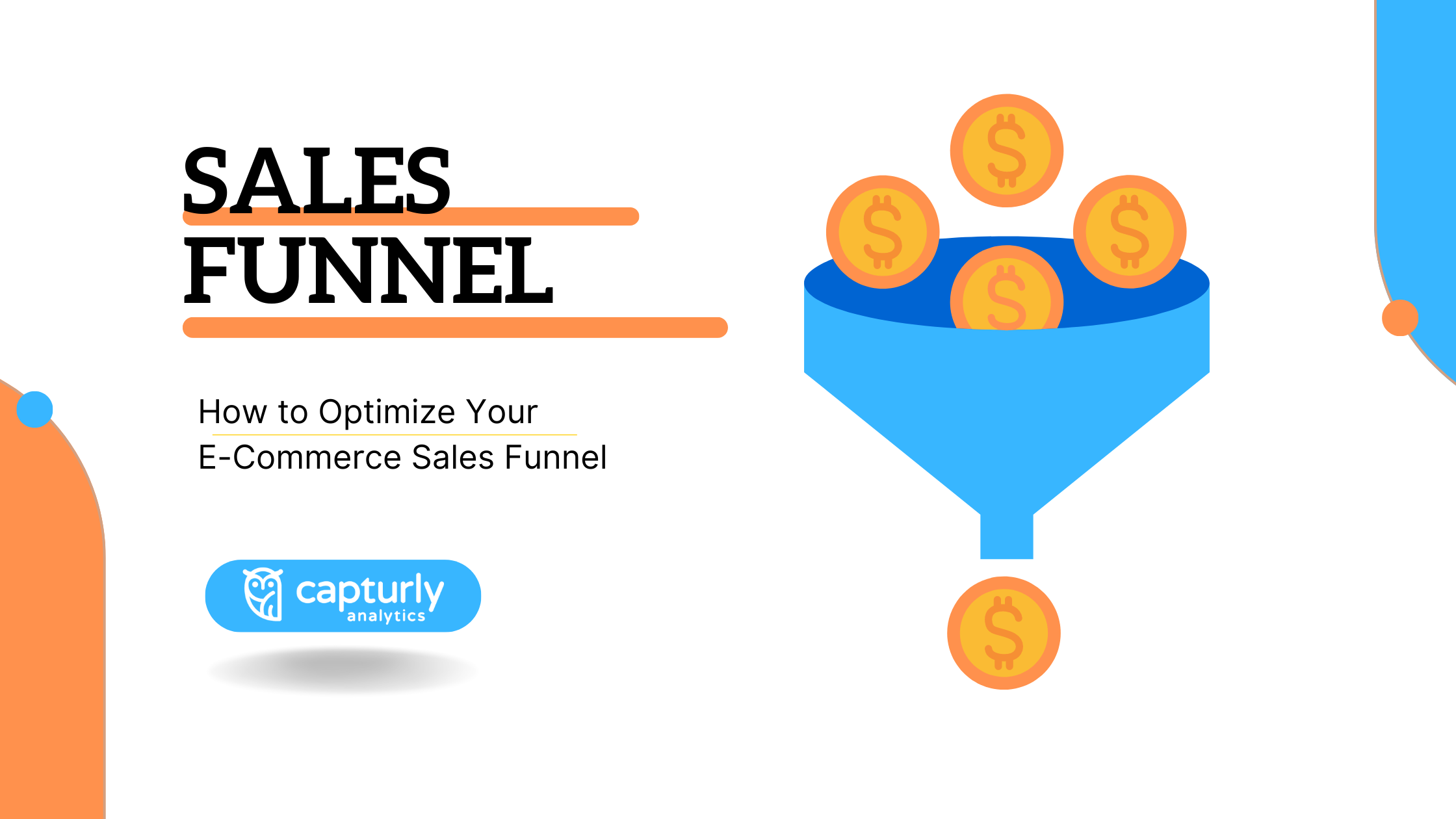An eCommerce sales funnel refers to a potential customer’s journey from being a prospect to a loyal customer.
It starts at a stage where your prospect is probably unaware of your products or brand. And ends at a stage where the customer makes repeat purchases and refers your brand to other buyers.
Optimizing every step of your eCommerce sales funnel is crucial as it can lead to increased conversions and customer loyalty. In addition, a well-optimized funnel can result in a significant increase in your revenue.
By implementing targeted strategies and best practices, you can ensure your sales funnel is as effective as possible and consistently drives results for your business. In this comprehensive article, we’ll explore 9 actionable ways to optimize your eCommerce sales funnel.
With these tips and techniques, you’ll be well on your way to creating an optimized sales funnel that drives results and fosters long-term customer relationships. So let’s dive into these proven methods.
9 Ways to Optimize Your E-Commerce Sales Funnel
Use Heatmaps to Optimize Your Product Pages
Understanding data is key to improving your eCommerce sales. Although tools like Google Analytics can provide quantitative data and insights, that may not be enough.
Qualitative insights, such as understanding how customers interact with your website, are equally essential. This is where heatmaps come in.
Heatmaps offer valuable insights into user behavior. They display where visitors click, scroll, and hover on your site. By analyzing heatmaps, you can pinpoint areas of your product pages that need improvement.
You can use a tool like Capturly to analyze heatmaps. Capturly is a conversion funnel analytics tool that offers insights into user behavior using heatmaps and session recordings.

Here’s how you can use Capturly heatmaps to improve your product pages:
- Start by examining your heatmaps. Look for confusing elements or weak calls to action. Once you’ve identified these areas, make changes and track the results. Heatmaps will guide your design choices, helping you create user-friendly product pages that convert.
- Your product images and descriptions are critical. Heatmaps can reveal if visitors are engaging with them or not. If you notice a lack of interaction, consider updating your images and descriptions. Make them more appealing and informative to capture users’ attention.
- Site navigation plays a crucial role in eCommerce user experience, especially on eCommerce websites. Use heatmaps to understand how visitors navigate your product pages. Are they struggling to find the “Add to Cart” button? Is your search function easily accessible? Address any navigation issues to create a seamless shopping experience.
- Page load time is another factor to consider. If your heatmap shows users leaving your site quickly, it might be due to slow-loading pages. Optimize your website’s speed to keep customers engaged and reduce bounce rates.
- Lastly, monitor how users interact with your promotional offers. Heatmaps can show if visitors are clicking on discount banners or special deals. If they aren’t, tweak your promotional messaging to make it more enticing.
Based on the qualitative data obtained from the heatmaps, you can run A/B tests on your eCommerce site. This way, you can offer a better user experience and improve sales.
Blogging
eCommerce is a competitive space, and it is very difficult to stand out from the crowd. But creating engaging, informative, and unique blog content can put you far ahead of your competitors.
Blogging can be an excellent way to drive people into your sales funnel. They can move your prospects from a stage where they are unaware of your brand to a stage where they make their first purchase.
Blogging can be one of the most cost-efficient ways to get started with your funnel optimization process. Make sure to pick the right eCommerce platform that will allow you to create and optimize blog content with ease.
Not just that, your blog content can drive traffic to your eCommerce store and establish your brand as an authority. So focus on crafting engaging content that resonates with your target audience. This can include how-to guides, industry news, or product spotlights.

Here are some popular blog post formats to consider:
- How-to guides: Teach your audience how to do something related to your products or niche.
- Listicles: Curate lists of tips, tools, or resources that your audience would find helpful.
- Case studies: Share real-life examples of how customers have benefited from using your products.
- Product comparisons: Compare your products to competitors and highlight the unique features and benefits.
- Industry news: Keep your audience updated on the latest trends and developments in your industry.
While creating blog content, implementing Search Engine Optimization (SEO) can be an added plus. SEO helps attract users from search engines with high purchase intent to your store, that too organically.
Another tip here would be to promote your blog content (or repurpose them) across all your social media channels. By doing so, you’ll drive more organic traffic to your eCommerce site and improve your sales funnel’s performance.
Marketing Automation
Marketing automation uses software tools to streamline marketing tasks, saving time and improving efficiency. It can help optimize your sales funnel by automating processes like eCommerce email marketing, social media posting, and lead nurturing.
But why focus on marketing automation? The biggest reason is that it can free up your time, allowing you to focus on more strategic aspects of your business.
To get started with marketing automation, consider these key areas:
- Email marketing: You can automate your email campaigns to nurture leads and engage with customers. You can use email marketing tools to automate email drip sequences for effective welcome emails, cart abandonment reminders, and post-purchase follow-ups.

- Social media management: Social media can be extremely time-consuming. You can automate a part of social media management by scheduling social media posts and monitoring engagement. You can do this by using social media management tools that help you maintain a consistent online presence.
- Lead nurturing: You can also use marketing automation to segment your audience and deliver personalized content based on user behavior. This will move leads through the sales funnel and increase conversion rates.
- Customer Relationship Management (CRM): CRM tools such as Hubspot can automate tasks like contact management and sales tracking. This can help you better understand your customers and identify opportunities for upselling or cross-selling. If you are on a tight budget, you can use Hubspot alternatives such as EngageBay and ActiveCampaign.
Higher efficiency, enhanced personalization, and improved customer engagement—are some of the benefits you can reap using marketing automation. So pick your tools wisely, and you are good to go.
Product Recommendations
As an eCommerce customer yourself, you would know the power of a personalized product recommendation.
When the right product is recommended to you at the right time, it is highly likely that you will add it to your order. Therefore, personalized product recommendations can significantly impact your eCommerce sales funnel.

By showing customers relevant items based on their browsing history or purchase behavior, you can increase average order value and improve customer retention.
Implementing smart product recommendations can also help you create a more engaging shopping experience and increase customer lifetime value.
Here are some tips to help you make the most of product recommendations:
- Analyze customer data: Overlooking your customers’ needs is one of the biggest eCommerce marketing blunders you can make. To avoid this, use analytics tools to understand your customers’ preferences and behavior. Then, leverage this information to tailor product recommendations that resonate with them.
- Use different recommendation types: Experiment with various types of product recommendations, such as “Customers also bought,” “You may also like,” or “Recently viewed.” This variety can cater to different customer needs and preferences.
- Place recommendations strategically: Position product recommendations in key locations, like product pages, cart pages, or even post-purchase emails. This ensures visibility and encourages customers to explore more products.
Chatbots
An important part of optimizing your eCommerce sales funnel is to remove any objections or questions that your prospects may have.
Questions about returns, shipping, product quality, discount codes, etc., may be holding them back from clicking the buy button.
Chatbots are AI-powered tools that can play a huge role here by removing their objections, answering questions at the right time, and urging them to make the purchase.
Chatbots can answer customer queries, provide support, and even assist with sales. Adding chatbots to your website can help streamline customer interactions and optimize your sales funnel.
Consider these best practices while implementing chatbots on your eCommerce website:
- Show “Thank you” messages: Chatbots can be a great way to display the “thank you for your order” messages. This can lead to higher customer loyalty and help you build a better relationship with your customers.

- Keep it conversational: Design your chatbot to engage users in a conversational manner. This creates a more human-like experience and can build rapport with customers.
- Train your chatbot: Continuously improve your chatbot’s performance by training it with real customer interactions. This helps it better understand user intent and provide more accurate responses.
- Use chatbots for lead generation: Collect user information like email addresses or phone numbers through chatbot interactions. This data can be used for eCommerce email marketing or retargeting campaigns.
Targeted Ads
When done right, targeted advertising can give a massive boost to your eCommerce sales funnel conversions and overall profits.
You may have heard of many eCommerce businesses experiencing high customer acquisition costs (CAC.) Yes, advertising may be expensive. But better targeting, personalized messaging, and well-optimized landing pages can significantly reduce your CAC.
The key is to first understand who your ideal customer is. And secondly, create ads that resonate with potential buyers and drive higher conversion rates.
Usually, you can target your audience in 3 ways:
- Demographics-based targeting – Here, you target people based on their demographics, interests, buying patterns, etc.—everything that fits your ideal customer persona.
- Retargeting – This is when you retarget the people who visited your website and interacted with products with more personalized ads. This can be a shoppable ad with product recommendations based on their viewing history.
- Lookalike – This is another type of targeting where you can upload a list of your loyal customers, and the ad platform will find people who match the same criteria. With this type of audience, it is possible to see conversion rates higher than that of demographics-based targeting.
To make the most of targeted ads, you can follow these tips:
- Segment your audience: Break your audience into smaller segments based on factors like demographics, browsing behavior, or purchase history. This allows you to create tailored ad campaigns that appeal to each group.
- Choose the right platforms: Identify the platforms where your target audience spends most of their time, such as social media, Google Ads, or email marketing. Then, focus your advertising efforts on these channels.
- Test and optimize: Continuously test different ad formats, messaging, and targeting options. Analyze performance metrics and optimize your campaigns to achieve better results.
Paid advertising for eCommerce may seem complicated, especially when you are trying it for the first time. For such cases, you can get help from a marketing coach who can ensure that your ads are well-optimized for conversions.
Social Proof
We, humans, are social beings. Hence, social validation can affect our purchase decisions in unexpected ways. Social proof is a powerful tool that can not just interest the prospects in your products but also leads to repeat purchases and word-of-mouth referrals.
By showcasing positive customer experiences, like raving reviews, positive testimonials, or social media mentions, you can massively improve the performance of your eCommerce sales funnel.
Here are some benefits of using social proof in your marketing efforts:
- Increased trust: Positive customer experiences can help build trust with potential buyers, making them more likely to make a purchase.
- Higher conversion rates: Social proof can help alleviate customer concerns and improve conversion rates on your eCommerce site.
- Enhanced brand reputation: Showcasing positive feedback can strengthen your brand image and attract more customers.

Here are some ideas on how you can use social proof on your website:
- Collect customer reviews: Encourage customers to leave reviews on your website or third-party platforms like Google or Amazon. Display these reviews prominently on your home page and product pages.
- Showcase testimonials: Reach out to satisfied customers and ask for testimonials. Feature these testimonials on your website, social media, or email campaigns.
- Highlight social media mentions: Share positive mentions of your brand or products on social media. This can help build credibility and showcase the popularity of your products.
- Showcase social media following: Your social media following can also be a great form of social proof. A good number indicates that you are popular and loved by your audience. So, if you have a huge Instagram following, then make sure that you show it off.
Loyalty Program
Loyalty programs can help optimize your eCommerce sales funnel by rewarding repeat customers and encouraging them to continue shopping with you.
By offering incentives like discounts, points, or exclusive offers, you can increase customer retention and boost overall sales.


Here’s how you can use loyalty programs to optimize your sales funnel:
- Choose the right rewards: Offer incentives that are valuable and appealing to your customers, such as discounts, free shipping, or exclusive products.
- Keep it simple: Design a loyalty program that’s easy to understand and participate in. Customers are more likely to engage with a program that’s straightforward and user-friendly.
- Promote your program: Make sure your customers are aware of your loyalty program by promoting it on your website, social media, and email campaigns.
- Gamify the experience: Add elements of gamification, such as progress bars or badges, to make the loyalty program more engaging and fun for customers.
- Monitor and optimize: Regularly analyze the performance of your loyalty program and make adjustments as needed to keep it effective and relevant.
Referral Marketing
Referral marketing is an effective strategy to optimize your eCommerce sales funnel by leveraging the power of word-of-mouth.
By encouraging your customers to refer friends and family, you can acquire new customers with a lower cost per acquisition and build a more loyal customer base.

To make the most of referral marketing, follow these tips:
- Offer enticing incentives: Provide rewards to both the referrer and the referred, such as discounts, freebies, or exclusive offers. This encourages customers to spread the word about your brand. In fact, 50 % of people are likely to give a referral if offered a direct incentive.
- Make it easy to share: Simplify the referral process by integrating social media sharing buttons or creating unique referral links that can be easily shared.
- Promote your customer referral program: Ensure your customers are aware of your referral program by promoting everywhere—on your website, social media, and email campaigns.
- Encourage user-generated content: Motivate customers to share their experiences with your products on social media, review sites, or your website. This can help generate buzz around your customer referral program.
Conclusion
A well-optimized eCommerce sales funnel acts as a slippery slide—where prospects move from being potential customers to repeat customers with the least possible friction.
You can create such a slippery slide funnel by implementing the strategies discussed in this post. With these tips, you can improve customer experience, increase conversion rates, and boost overall sales.
Remember to keep experimenting and iterating to find the best combination of strategies that work for your unique audience and niche.
Author bio
Eduard Klein is an International Digital Growth Marketer, Blogger, and Entrepreneur with a global mindset. He guides us through the process of starting and growing a digital business and riding the wave of digital technology and marketing without getting swept away.
:
Don't forget, sharing is caring! :)


1 Comment
Madison
2023-12-18 at 03:23Insightful post! Thanks for sharing this eCommerce sales funnel tips – very informative!